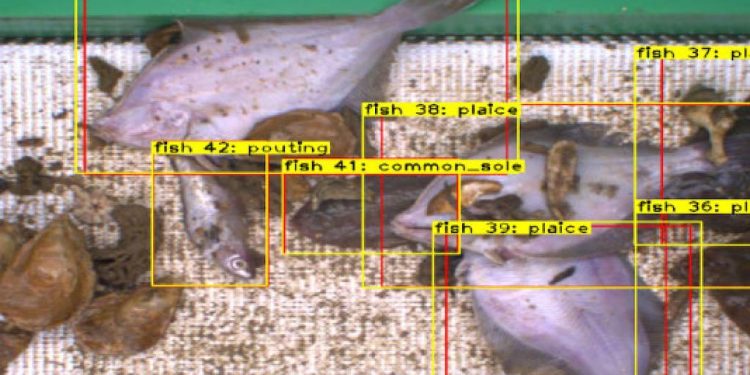Dutch researchers and fishermen have developed an AI-based tool for the Fully Documented Fisheries (FDF) project, supported by EU funding.
Researchers at Wageningen University and Research (WUR) in the Netherlands have joined forces with the Dutch fishing industry to develop an AI-based tool. This automatically recognises the species and evaluates the size of each fish, facilitating the handling of fish and recording of catches on board vessels. It also provides valuable data for fisheries management.
The project goes beyond the existing systems. FDF makes it possible to respect the landing and registration obligation, focusing on high-quality data for fisheries research. This is achieved through a powerful algorithm that recognises the species and size of fish, allowing the system to distinguish between catches for human consumption (above minimum size) and unwanted catches (below minimum size).
‘One of the advantage of the camera system, for example, is that you don’t need to sort undersized fish manually,’ commented trawler skipper Albert Visser.
FDF has many potential advantages. It can improve the processing of catches on board, reduce the workload of the crew and lessen the administrative burden. It can also monitor total catches in real time by size, species and weight, and generate detailed data that can be used for scientific purposes, stock estimates, research and fisheries policy.
There is also a potential for commercial use, such as improving the selectivity of the fisheries, as well as increasing transparency – not only for the sector itself, but also for consumers and NGOs.
The project blends new technology to improve data collection in commercial fisheries, ultimately leading to sustainable fisheries.
‘We have improved data, improved stock assessment, better research, better policy and, ultimately a better fisheries sector. It’s really a win-win situation,’ commented Edwin van Helmond, fisheries biologist at Wageningen University and Research.
FDF has been running as a pilot project for more than three years, with many fishers signing up to take part in the trials. Participation was voluntary, although the participants received compensation for the extra work involved.
The system was installed on board participating vessels. A video camera recorded the fish moving along the conveyor belt from the net unloading area to the hold of the vessel. An on-board AI unit then decoded video images to identify and record the species and size of each fish. This allowed the fishers to quickly see if they were catching too many undersized fish or the wrong species, and move to another fishing ground.
The FDF project originally targeted beam trawlers, which are important in Dutch fisheries. After promising results in the first pilot phase, the team decided to expand the project to other fleet segments, as well as other countries.
The next phase of the project will cover other fishing methods and other EU Member States, mainly Denmark and Belgium.









